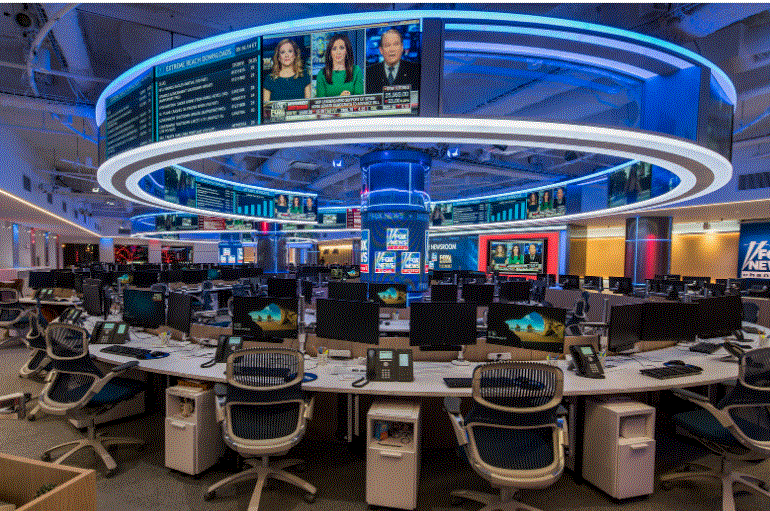
US television is going through one of the largest changes in its lifetime. Those familiar days of set programming and clunky cable boxes are disappearing, to be replaced by flexible, web based systems that provide content at the user’s option. Sites like ifvod tv and IPTV are revolutionizing the way Americans use entertainment, providing a more streamlined, connected experience that blends into contemporary life.
Streaming is now the favored mode of viewing. According to reports by Statista, close to 80% of U.S. households have at least one streaming or IPTV subscription. Convenience is the attraction audiences are now able to view thousands of programmes, sporting events, and live channels from any device, at any time.
From Traditional Broadcast to Digital Flexibility
Previously, television timetables determined when and how individuals watched their favorite shows. Now, technology empowers viewers. IPTV, or Internet Protocol Television, enables live broadcasts to stream over high speed connections, while ifvod tv offers on demand libraries full of films and series. Together, they are the new face of television one that flows through the cloud and not cables.
This change was spurred on by the development of broadband and mobile internet. With faster data speeds and stable connections, streaming is now hassle free. Families can stream live sports on IPTV, switch to ifvod tv for a film, and pick up the same show on their phones while on the road all without a hitch.
Why Americans Are Leaving Cable Behind
The emergence of digital platforms can be closely linked to cost, control, and access to content. A recent Nielsen study finds that the typical American household pays over $100 monthly for cable TV. In comparison, most IPTV or streaming packages are much cheaper and offer a greater variety of content.
Viewers no longer wish to pay for hundreds of channels that they do not watch. They like having options to tailor. Ifvod tv and IPTV allow users to select what is important to them be it live news, local sporting events, or on demand entertainment. This ability has become one of the most compelling drivers of cord cutting throughout the United States.
The Midpoint of Change: Ifvod TV and IPTV
It is through such platforms as ifvod tv and IPTV that this shift has come to be centered. These platforms merge the time sensitivity of live television with the diversity of digital streaming. IPTV facilitates live streaming through internet links, whereas ifvod tv allows viewers to have complete freedom regarding what and when to view.
This blended model is exactly suited to shifting American habits. Individuals desire instant access without restraint morning news, weekend movie marathons, everything. Leichtman Research Group indicates that over 100 million US homes increasingly use streaming and IPTV services rather than the traditional cable. The trend keeps increasing each year as more customers find the ease and affordability of the platforms.
The Technology Powering the Future
Such rapid growth of internet television is supported by technology. Cloud computing allows platforms to keep much video content that can be watched immediately. Rather than local servers, content is today disseminated across the globe with the help of data centers that provide reliability and quick access.
Artificial intelligence is also increasingly involved. New IPTV and streaming systems employ algorithms that learn what the viewer enjoys and provide recommendations for new programming based on this. Such personalization has been a prime reason why subscribers remain with their current service. Adaptive streaming improves matters still further by automatically optimizing video quality to be commensurate with internet speeds, minimizing buffering and maximizing performance.
Market Growth and Economic Potential
The commercial aspect of streaming and IPTV is growing rapidly. Experts forecast the U.S. combined market for digital TV services to top $45 billion per year in 2028. Telecom providers, broadcasters, and free lance creators are all spending big on IPTV infrastructure and cloud based platforms.
The growth serves to benefit all members of the ecosystem. Creators of content now have direct access to audiences without needing the cable networks. Viewers have more control, and advertisers are able to target specific audiences with accuracy. This is a smarter, data driven marketplace one in which every viewing decision offers insight into consumer behavior.
Shifting Viewing Patterns Across Demographics
How the Americans view TV largely varies based on their generation. Young viewers are spearheading the trends of streaming, many of them avoiding cable altogether. According to surveys, over 80% of individuals aged under 35 view the majority of their video material online.
Older audiences are also converting, attracted by the ease of ifvod tv and IPTV platforms. They like watching familiar channels on smart TVs without the hassle of complicated installations. Multi device consumption is the new standard families tend to stream different shows at the same time on different screens, ranging from phones to tablets to big screens.
Challenges and Competition in the Streaming World
The transition to digital television also brings challenges. Licensing rights, content restrictions, and regional availability remain obstacles for many providers. IPTV and ifvod tv services must navigate complex broadcasting laws to operate legally within U.S. boundaries.
Competition is also a pressure point. The number of streaming and IPTV platforms available continues to increase, and this results in subscription fatigue among consumers. Businesses are pushing back with packaged offerings, ad supported service, and free content levels to retain viewers. High quality service and robust libraries of original content will be required for success over the long haul.
The Role of AI, 5G, and Cloud Expansion
Rising technologies continue to mold the future of U.S. television viewing. The introduction of 5G networks will ensure that streaming is smoother and faster, particularly for mobile users. Cloud based delivery will continue to grow, empowering even small time content creators to broadcast in high definition.
Artificial intelligence is going to become the foundation of personalization and user experience. Predictive suggestions, interactive commercials, and even AI created shows may come to redefine what “watching TV” is all about. IPTV and ifvod tv sites will incorporate these innovations to provide more dynamic and engaging entertainment avenues.
The Future Outlook
The future of American television will be characterized by connectivity, choice, and customization. Old cable models are gradually going out of use as digital platforms continue to reign supreme. Audiences are eager to control what they watch, where they watch it, and how much they pay for it and ifvod tv and IPTV are proving to do just that.
Experts are in accord that the U.S. entertainment industry is heading towards an all digital future where everything about watching from discovery to delivery is online. Cloud infrastructure, AI based recommendations, and mobile streaming will continue to be at the center of this change.
Conclusion
Television in the United States is no longer limited by schedules or cables. With services like ifvod tv and IPTV, entertainment has become flexible, data driven, and user centered. The combination of technology, affordability, and personalization is defining how Americans engage with content.
The TV future is now it’s speeded up, connected, and clou dpowered. With innovation on the go, the distinction between conventional broadcasting and digital watching will fade, making Americans have access to endless options for viewing on their own terms.


